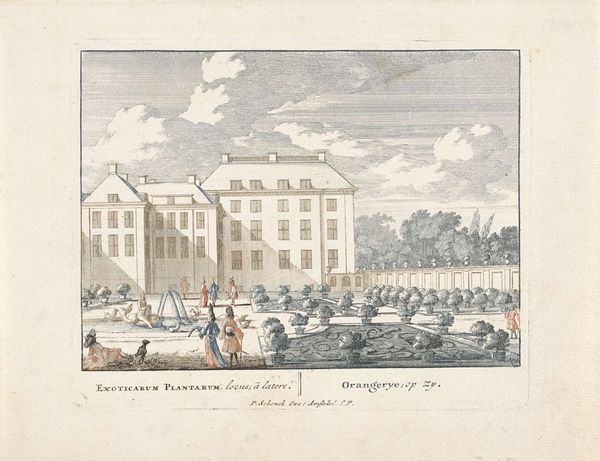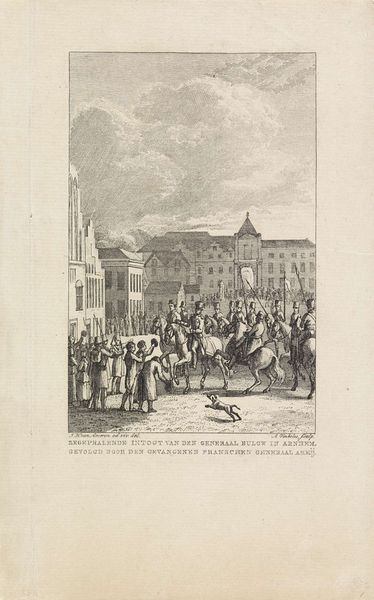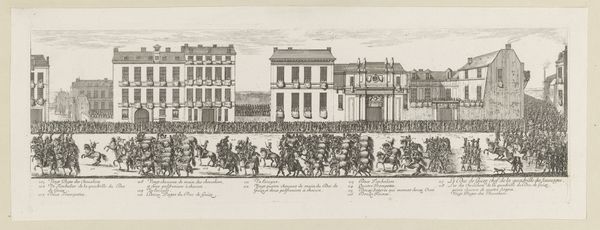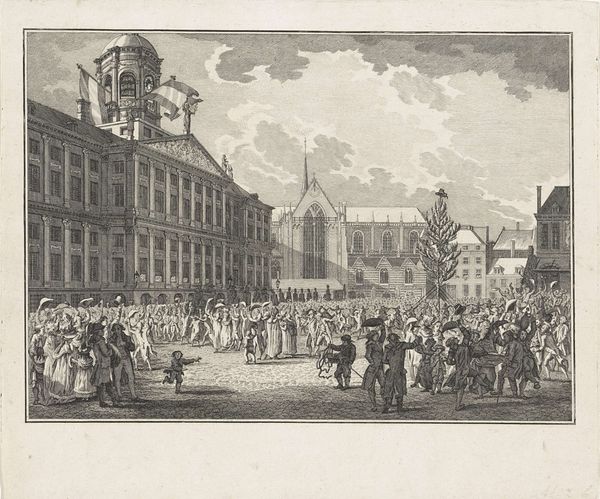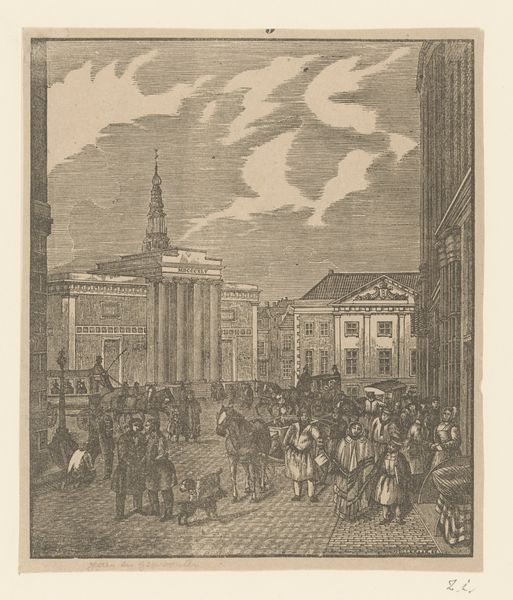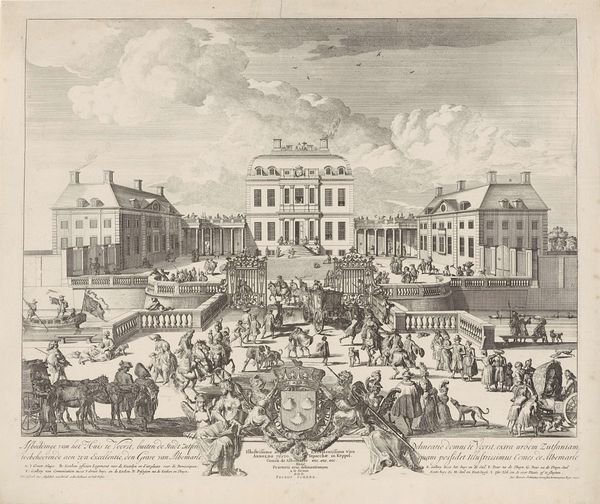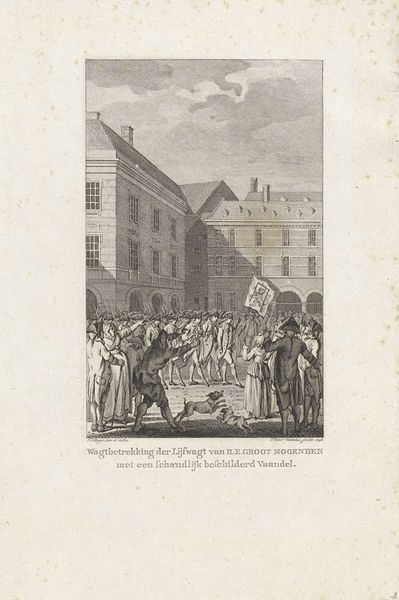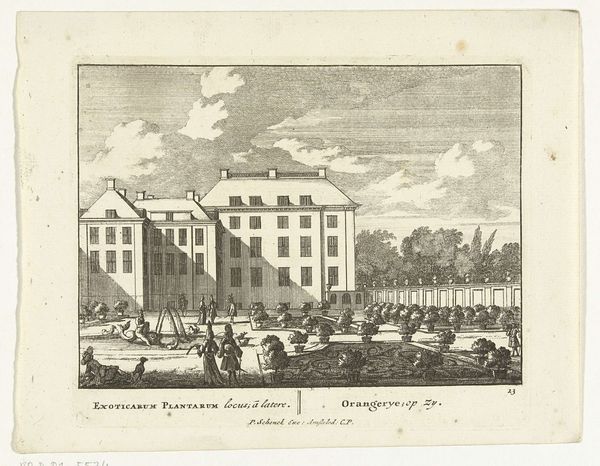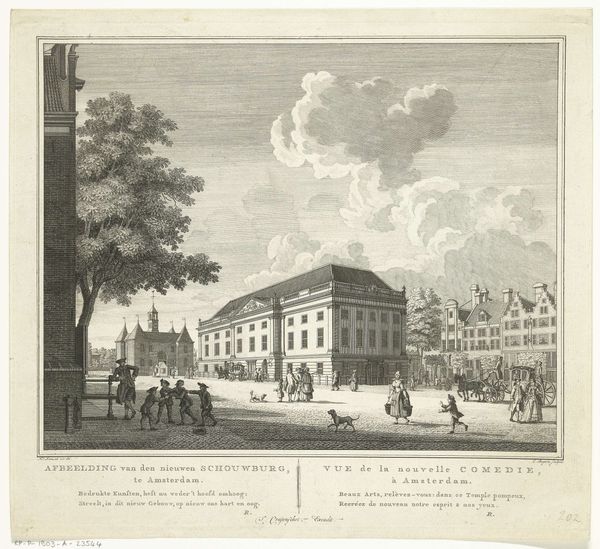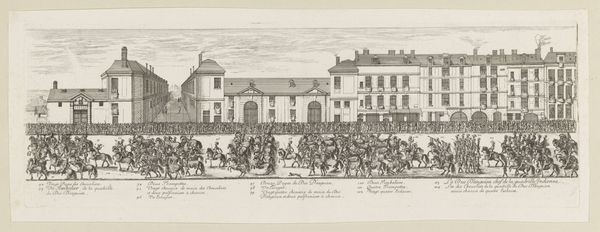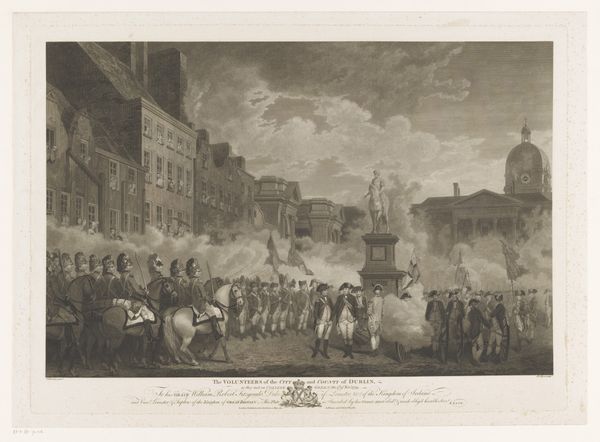
Vrijlating van de gearresteerde leden van de burgerdeputatie, 1795 1795
0:00
0:00
janlucasvanderbeek
Rijksmuseum
Dimensions: height 268 mm, width 325 mm
Copyright: Rijks Museum: Open Domain
Curator: This print, crafted by Jan Lucas van der Beek in 1795, captures the moment of "The Release of the Arrested Members of the Civic Delegation." It's currently held in the Rijksmuseum collection. What's your initial take on it? Editor: My first impression is the feeling of restrained elation, a sense of hope emerging from confinement. There’s a static grandeur in the architecture and dynamism in the movement of the crowd; the contrast creates an engaging tension. Curator: Indeed, the Neoclassical facade of the building looming behind the throng lends a rather monumental air to the scene. Considering its history, this engraving, an etching to be precise, speaks to the socio-political ferment of the late 18th century. The arrested delegation suggests conflict and their release, a victory of sorts. How might such imagery resonate with audiences then, and even now? Editor: The image definitely carries the weight of political struggle. Van der Beek employed the narrative potential within visual art; the historical subject of the print made it politically valuable, fostering group identity around republican ideals. Consider the detail etched within faces. Everyone here participates in an event that they hopefully find meaningful. Even now, this art may work in a similar fashion as we recognize historical struggles, their human dimensions, and echoes that we continue to explore in today’s political landscape. Curator: Precisely. Beyond the immediate narrative, the engraving relies on visual tropes: architecture implying authority, the assembled crowd embodying the popular will. One almost wonders how meticulously this public image was manufactured, since prints can spread visual ideas and influence much more widely. Editor: Absolutely. It reflects not just an event but the shaping of a particular narrative around it. How powerful imagery helps define a moment—constructing memory and influencing perspective is exactly the sort of inquiry historical study needs to analyze. Curator: Agreed. The print provides such fertile ground for analyzing the intersection of visual symbolism, political messaging, and popular sentiment. It holds such powerful lessons in seeing not only what is there, but understanding its effect as an instrument of cultural memory. Editor: Right! It prompts critical reflection not only about historical circumstances, but more pressingly, how historical narratives are shaped through visual media, what we do with this knowledge, and how these dynamics shape political decisions.
Comments
No comments
Be the first to comment and join the conversation on the ultimate creative platform.
